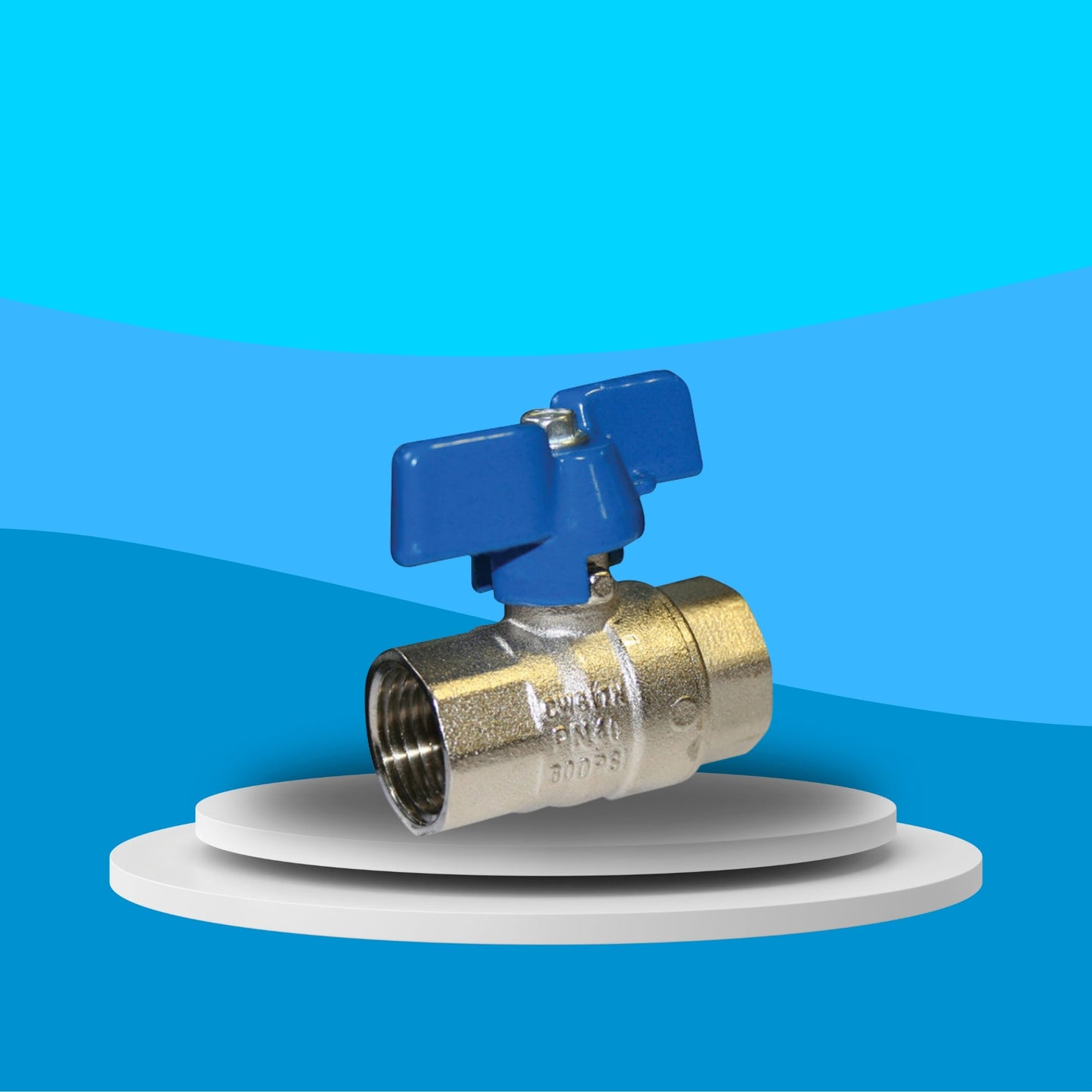Wras Valves
Wras Approved Brass Ball Valve - Standard Pattern Screwed BSPP (Blue Butterfly Lever)
Wras Approved Brass Ball Valve - Standard Pattern Screwed BSPP (Blue Butterfly Lever)
Couldn't load pickup availability
WRAS Approved | Screwed BSPP | Nickel Plated Brass | Full Bore | Blue Butterfly Handle
This WRAS Approved Standard Pattern Brass Ball Valve with Screwed BSPP ends, nickel-plated body, and a blue butterfly handle is a compact and durable solution for fluid shut-off in potable water systems and general plumbing applications. Designed to meet the strict standards of the Water Regulations Advisory Scheme (WRAS), this valve is suitable for use in domestic, commercial, and light industrial environments where compliance and reliability are essential.
The full bore design allows for unrestricted flow, minimising pressure drop and enhancing system efficiency. The nickel-plated brass body offers excellent corrosion resistance and improved longevity, while the blue butterfly handle ensures space-saving operation and clear cold water identification.
Pressure rated according to size, this valve supports a range of demanding conditions:
PN64 for ¼” to ⅜”
PN40 for ½”
PN32 for ¾” and 1”
It’s also built to perform in a temperature range of -20°C to 110°C, making it suitable for a wide variety of water-based systems.
WV - 4178
Share

FAQ's
What is the difference between a valve and an actuator?
What types of actuators are available?
The main types of actuators are:
Pneumatic actuators – use compressed air for fast, reliable operation.
Electric actuators – use electrical power for precise control.
Hydraulic actuators – use fluid pressure for high-torque applications.
Each type offers unique advantages depending on the environment, media, and system control needs.
How do I choose the right actuator for my valve?
To select the correct actuator, consider:
Valve type and torque requirement
Power source available (air, electric, or hydraulic)
Operating environment (temperature, humidity, hazardous area)
Control signal type (on/off or modulating)
Matching actuator torque and compatibility with the valve’s ISO mounting ensures reliable performance.
What are the main types of valves used in automation?
The most common valves in automated systems include:
Ball valves – for tight shutoff and quick operation.
Butterfly valves – for larger flow control with compact design.
Globe valves – for precise throttling and flow regulation.
Check valves – to prevent backflow.
Gate valves – for full bore flow isolation.
What’s the difference between a double-acting and spring-return actuator?
Double-acting actuators use air (or power) to both open and close the valve.
Spring-return actuators use air to open (or close) the valve, and a built-in spring to automatically return it to a safe position when power or air is lost — ideal for fail-safe operation.
How often should valves and actuators be serviced?
Regular maintenance intervals depend on operating conditions, but a good rule of thumb is to inspect every 6–12 months.
This includes checking for leaks, lubrication, seal wear, and actuator responsiveness to prevent unexpected downtime.

